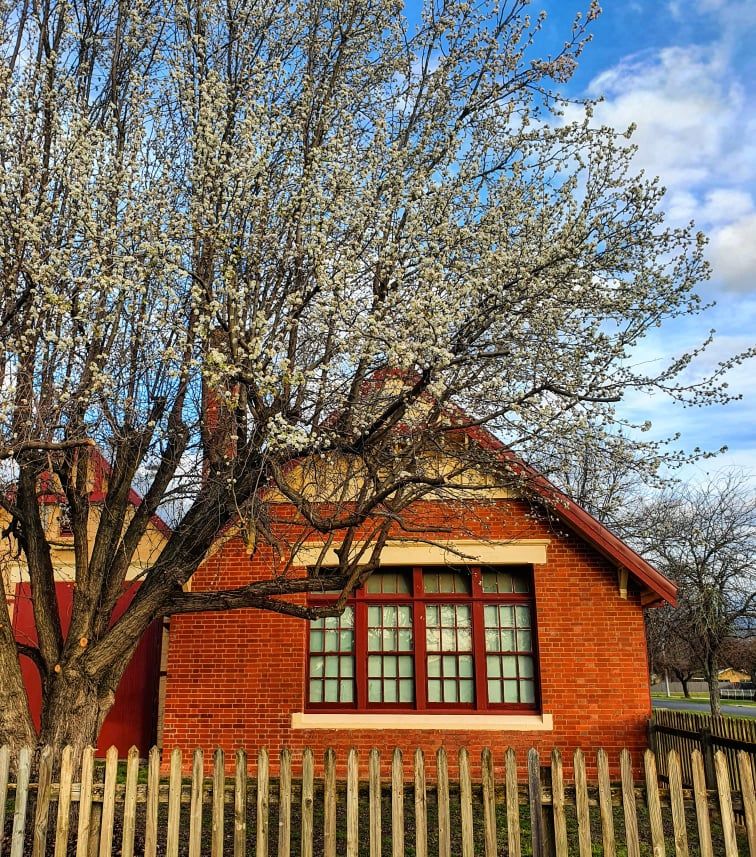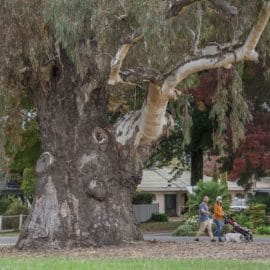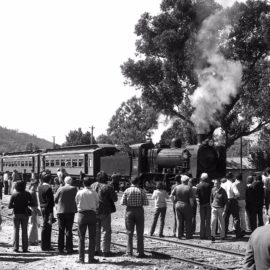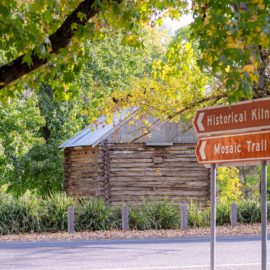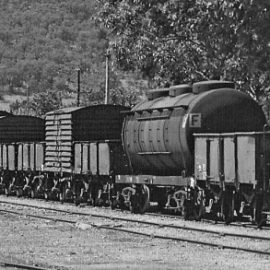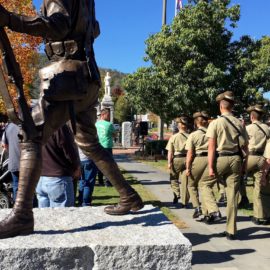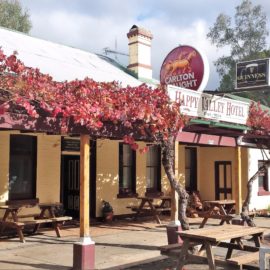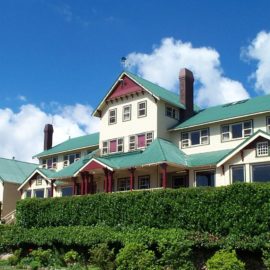Museum & History

Hang around long enough and you'll soon see how remarkably resilient the people of Myrtleford are. It's a resilience built on an ability to adapt and change, strengthened by family and culture, and by a love for our way of life.
The Things That Forged Us
First Nations People
The river valleys, alpine peaks and high plains of Bright & Surrounds are where the traditional lands of the Dhudhuroa, Gunaikurnai, Taungurung, Waywurru and Jaithmathang meet. These Nations have lived on and cared for this Country for tens of thousands of years and continue to play an active and important role in ensuring Country remains healthy for generations to come.
This fertile land, with its abundance of river fish, grassy hunting plains, and phenomenal bogong moth migration, is sacred to the Traditional Custodians. The high peaks – including Mount Buffalo to Myrtleford's southwest – hold special spiritual significance and – prior to the Frontier Wars – attracted countless generations of First Nations groups from around Victoria to participate in ceremonies, feast on the nutritious bogong moth, trade, settle disputes and perform marriages. Most of the trails that ascend these peaks today follow the ancient pathways established by the Traditional Custodians.
Arrival Of The Pastoralists
Explorers Hume and Hovell travelled near Myrtleford in 1824 on their mission to identify new pastoral land. Following their return, word soon spread that abundant well-watered grazing lands lay south of the Murray River on the plains of North East Victoria, and by 1837, squatters from NSW had driven their cattle down to seize the land. The land around what is now the town of Myrtleford became known as Myrtle Creek Run – one of many new cattle runs that spanned the region.
The occupation marked the start of the Frontier Wars and, with no law enforcement in the region to police the squatters, their arrival was catastrophic to the Dhudhuroa, Taungurung, Waywurru, Gunaikurnai and Jaithmathang Nations. Their populations quickly plummeted as a result of largescale gun massacres – such as the Oxley Plains Massacre – opportunistic shootings, arsenic poisoning, alcohol and disease.
The discovery of gold in the Buckland Valley in 1853, and the masses of immigrants that came with it, brought a final blow to the First Peoples' traditional way of life, with their hunting grounds and fishing spots occupied throughout the valley.
The First Peoples who survived the Frontier Wars carried significant trauma. A few are believed to have gone to live on pastoral runs while survivors from the Ovens Valley, Kiewa Valley and Mitta Mitta were taken to the Aboriginal Reserve at Tangambalanga, created in 1864. At this time, the names of 45 First Nationals people were recorded as living in Tangambalanga, reflecting the severity of genocide that had swept through the region. By 1872, the policy of removing First Nations children from their families was in force across North East Victoria, further crippling the surviving communities.
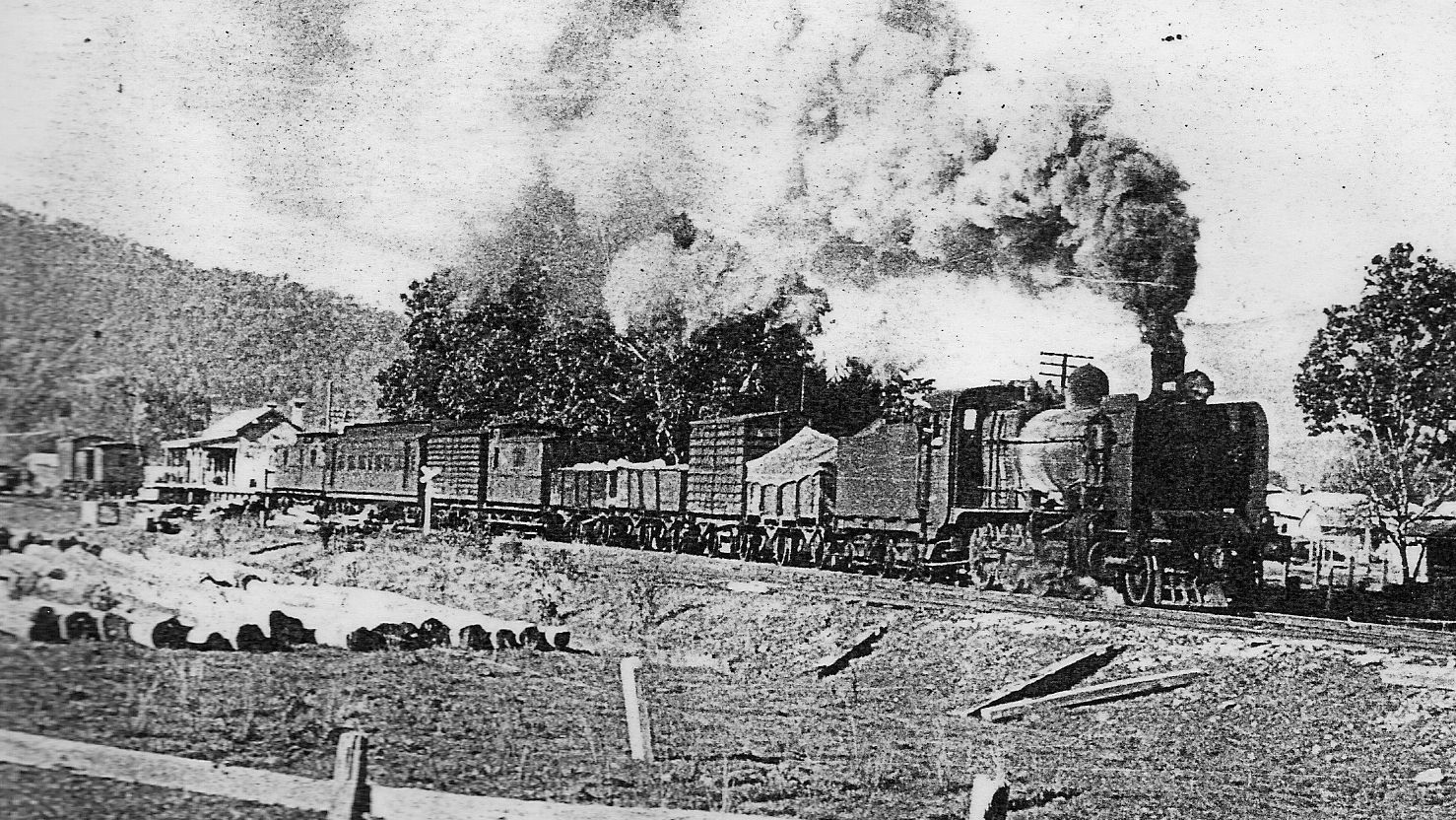
The Intermingling of Cultures
In 1853, as gold diggers flocked to the Buckland Valley, a small township sprung up around where the road, then known as Buckland Road, forded Myrtle Creek. The name of Myrtleford was consequently adopted and the road is today known as the Great Alpine Road.
Most towns founded during the gold rush era were made up of a diverse mix of nations, and while the English and Irish accounted for a major proportion of the population, people from Scotland, France, Poland, Germany, India, the United States, China and Italy all contributed to the development of Myrtleford and surrounding areas.
The Chinese were very adept at market gardening and their vegetables were highly sought after, while Indian hawkers trundled their wares through the district and were always a welcome sight to children who delighted in the mystery of such an array of goods.
During the 1920s, large numbers of Italian migrants arrived in the district and established themselves in the tobacco industry. More Italians arrived in Myrtleford in 1942, although this time as prisoners of war interned at the POW Camp at East Whorouly. Many went to work on farms during this period, endearing themselves to the community. When the Second World War ended, the tobacco farms around Myrtleford experienced a second influx of Italians; through sheer hard work, many were able to buy their own farms and the tobacco industry began to boom.
By 1939, bushfires near Melbourne and a post-war building boom led to a surge in demand for timber from the Ovens Valley. This resulted in the building of a network of roads that helped open the Alps to tourism and the strengthening of a timber industry that continues to be a major contributor to Myrtleford's economy today.
Resilience
The people of Myrtleford are remarkably resilient, and it shows. In 2006, an economic shockwave swept through the town when the Australian tobacco-growing industry finally collapsed. The collapse affected 138 tobacco farmers in the region and sapped $90-million a year from the town's economy.
The tobacco fields are long gone, but the beautiful old tobacco-drying kilns still grace the landscape, offering a fond reminder of the boom times. Despite the devastation, Myrtleford forged ahead, growing hops, grazing cattle, making wine and producing and milling regenerative pine. Today, Myrtleford is flourishing, supported by its industry and a growing tourist appreciation for this wonderful country town.
Museum
The Old School Museum in Myrtleford is housed in the former Myrtleford State School, which operated from 1870 to 1938. It's a great way to get a glimpse into the town's past, including information on the Myrtleford Prisoner Of War Camp and the old tobacco farming industry. The museum has a range of displays that include the old schoolroom, a recreated 1930s kitchen and living room, gold mining equipment, newspaper printing machinery, horse-drawn agricultural machinery, farming equipment, and military photographs and memorabilia.
OPENING HOURS: Open Sundays 11am-2pm, September through to May, or by appointment.
ADMISSION: Adults $5 | Concession and Students $3 | Children under 12 Free.
RESEARCH FEE: $10.00
PHONE: 0432027536 or 0408492097
ADDRESS: 29 Elgin Street, Myrtleford
Experiences You'll Love
Farm Gates
We share the places where you can buy right from the source.
